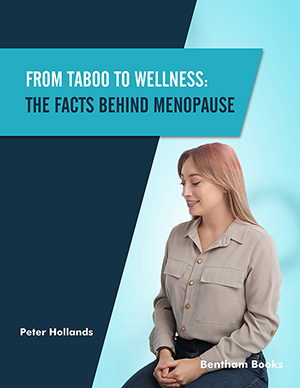Abstract
Background: Fatigue is a complex phenomenon. It is a common problem that occurs at all periods of childbearing. Pregnancy and labor are recognized as a normal physiological process, and fatigue, a common symptom that occurs frequently throughout the childbearing experience, has the potential to negatively affect the woman’s prenatal and birth experience. Fatigue is often overlooked by health professionals.
Objective: The aim of this systematic review is to review the literature regarding the factors influencing maternal fatigue during childbirth and its management.
Methods: The Joanna Briggs Institute (JBI) systematic review was used to guide this study. Preferred Reporting Items for Systematic Reviews and Meta-Analyses (PRISMA) was performed to report this systematic review. The database was searched from CINALH, Pubmed, PsyInfo, ThaiJO, and other sources for grey literature from 1990-2021. The methodological quality process used the critical appraisal tool for RCT study and MINORS (Methodological Index for Non-randomized Studies). Nine published articles were selected for this study.
Results: The factors influencing maternal fatigue during childbirth were found to be physiological, psychological, and situational. The physiological factors were age, parity, uterine contractility, available energy substrate, nutrition adequacy, and prenatal exercise. The psychological factors were pain and anxiety. The situational factors were childbirth education, pain medication, prenatal employment, sleep, breathing technique, and pushing intervention. The strategies of managing fatigue during childbirth were 1) assessing maternal fatigue in early pregnancy; 2) childbirth preparation; 3) conservation of energy; 4) shortened duration of labor; and 5) reduced labor pain and anxiety.
Conclusion: Maternal fatigue during childbirth impacts the mother, the child, and the family. It is important for nurses to understand the deleterious effects of fatigue on childbearing women and to promote interventions that reduce or prevent fatigue during pregnancy and childbirth.
Keywords: Fatigue during childbirth, managing fatigue, factors influencing fatigue, strategies of fatigue management, systematic review, women.
[http://dx.doi.org/10.1111/j.1552-6909.1986.tb01409.x] [PMID: 3639925]
[http://dx.doi.org/10.1016/S0897-1897(95)80593-1] [PMID: 7668856]
[http://dx.doi.org/10.1016/0091-2182(91)90045-Q] [PMID: 1757816]
[http://dx.doi.org/10.1097/00006199-198803000-00004] [PMID: 3347523]
[http://dx.doi.org/10.1097/00012272-199306000-00007] [PMID: 8512305]
[http://dx.doi.org/10.1111/j.1523-536X.1990.tb00716.x] [PMID: 2222637]
[http://dx.doi.org/10.1097/00006199-199301000-00008] [PMID: 8424067]
[http://dx.doi.org/10.1891/1061-3749.5.1.3] [PMID: 9505466]
[http://dx.doi.org/10.1016/j.ajog.2004.05.086] [PMID: 15592289]
[http://dx.doi.org/10.1111/j.1365-2648.2008.04732.x] [PMID: 18702771]
[http://dx.doi.org/10.1111/j.1552-6909.1999.tb01968.x] [PMID: 9924868]
[http://dx.doi.org/10.1111/nhs.12149] [PMID: 24835296]
[http://dx.doi.org/10.1111/j.1552-6909.1999.tb01967.x] [PMID: 9924867]
[http://dx.doi.org/10.1046/j.1365-2648.2003.02931.x] [PMID: 15009351]
[http://dx.doi.org/10.1097/00012272-199703000-00003] [PMID: 9055027]
[http://dx.doi.org/10.1097/00012272-199503000-00003] [PMID: 7778887]
[http://dx.doi.org/10.1371/journal.pmed.1000097] [PMID: 19621072]
[http://dx.doi.org/10.1136/jech.52.6.377] [PMID: 9764259]
[http://dx.doi.org/10.1046/j.1523-536X.1998.00241.x] [PMID: 9892892]
[http://dx.doi.org/10.1097/NMC.0b013e3181cae7ad] [PMID: 20215948]
[http://dx.doi.org/10.1016/j.midw.2010.08.009] [PMID: 20952110]
[http://dx.doi.org/10.1111/j.1365-2702.2012.04084.x] [PMID: 22519453]
[http://dx.doi.org/10.1097/jnr.0000000000000165] [PMID: 28072678]
[http://dx.doi.org/10.1080/00140137108931236] [PMID: 5117616]
[http://dx.doi.org/10.1016/S0897-1897(05)80056-4] [PMID: 1741638]
[http://dx.doi.org/10.1111/j.1552-6909.1999.tb01983.x] [PMID: 10102546]
[http://dx.doi.org/10.1111/j.1471-0528.2001.00034.x] [PMID: 11281466]
[http://dx.doi.org/10.1002/nur.20109] [PMID: 16404733]
[http://dx.doi.org/10.1891/0739-6686.19.1.249] [PMID: 11439783]
[http://dx.doi.org/10.1111/j.1552-6909.1999.tb01969.x] [PMID: 9924869]
[http://dx.doi.org/10.1038/nm.2507] [PMID: 22064429]
[http://dx.doi.org/10.1523/JNEUROSCI.3763-04.2005] [PMID: 15689558]
[http://dx.doi.org/10.1016/j.ejogrb.2009.02.031] [PMID: 19278773]
[http://dx.doi.org/10.1111/j.1552-6909.1999.tb01982.x] [PMID: 10102545]
[http://dx.doi.org/10.1111/j.1547-5069.1994.tb00935.x] [PMID: 8063323]
[http://dx.doi.org/10.1111/aogs.13121]
[http://dx.doi.org/10.1111/j.1552-6909.1994.tb01951.x] [PMID: 7853082]
[http://dx.doi.org/10.1093/jncimonographs/lgh008] [PMID: 15263044]
[http://dx.doi.org/10.1016/0306-9877(80)90105-X] [PMID: 7412641]
[http://dx.doi.org/10.1111/jmwh.12075] [PMID: 24325752]
[http://dx.doi.org/10.1111/j.1365-2702.2008.02720.x] [PMID: 19583645]
[http://dx.doi.org/10.1016/j.pmrj.2010.04.018] [PMID: 20656627]
[http://dx.doi.org/10.1097/00000542-198307000-00001] [PMID: 6305238]
[http://dx.doi.org/10.1177/1099800403262142] [PMID: 15068660]
[PMID: 3342188]
[http://dx.doi.org/10.1016/S0897-1897(95)80550-8] [PMID: 7598523]
[http://dx.doi.org/10.1136/bmjopen-2016-012290] [PMID: 27998899]
[http://dx.doi.org/10.1002/14651858.CD002006.pub4]
[http://dx.doi.org/10.1111/j.1547-5069.1986.tb00569.x] [PMID: 3641780]
[http://dx.doi.org/10.2165/00007256-200939050-00005] [PMID: 19402743]
[http://dx.doi.org/10.1097/00006842-197609000-00003] [PMID: 981490]
[http://dx.doi.org/10.1046/j.1523-536X.2002.00150.x] [PMID: 11843785]
[http://dx.doi.org/10.1016/j.apmr.2019.01.005] [PMID: 30955793]
[http://dx.doi.org/10.1097/AOG.0000000000003081] [PMID: 30681540]
[http://dx.doi.org/10.1097/00000542-199903000-00034] [PMID: 10078693]
[http://dx.doi.org/10.4103/0019-5049.71044] [PMID: 21189883]
[http://dx.doi.org/10.1002/14651858.CD007715.pub2] [PMID: 23780639]
[http://dx.doi.org/10.1097/01.JPN.0000270626.66369.26] [PMID: 17505229]
[http://dx.doi.org/10.3961/jpmph.20.372] [PMID: 34092064]
[PMID: 33485392]
[http://dx.doi.org/10.1111/j.1526-4637.2011.01243.x] [PMID: 21939499]
[http://dx.doi.org/10.1523/JNEUROSCI.0252-14.2014] [PMID: 24849343]
[PMID: 2332746]
[http://dx.doi.org/10.1111/j.1552-6909.1997.tb02748.x] [PMID: 9395982]
[http://dx.doi.org/10.1080/01674820410001737432] [PMID: 15376404]
[http://dx.doi.org/10.1002/14651858.CD009124.pub3] [PMID: 28349526]
[http://dx.doi.org/10.1177/0884217503258497] [PMID: 14649600]
[http://dx.doi.org/10.1161/01.CIR.41.6.989] [PMID: 5482913]
[PMID: 9009822]
[http://dx.doi.org/10.1016/S0897-1897(96)80435-6] [PMID: 8871433]













